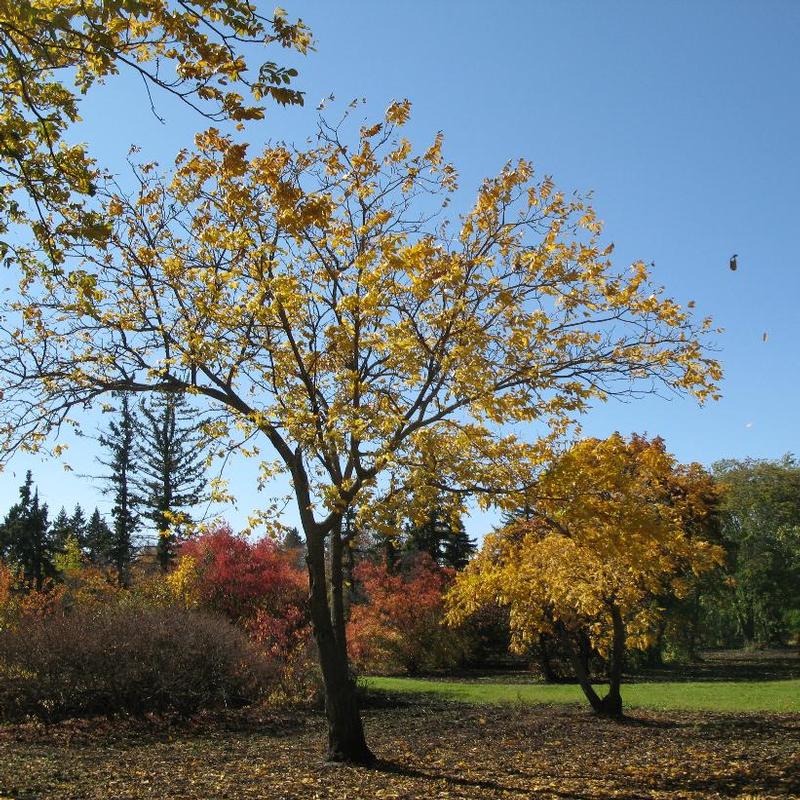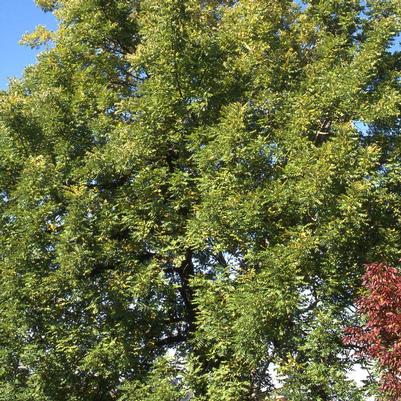« Previous Plant | Next Plant »
Juglans cinerea
Butternut
An open, broadly rounded crown displays large, compound, green leaves. The edible, oval nuts are encased in hairy husks maturing in the fall. The nuts are sweet, oily, and tasty with a buttery flavour, hence the common name.
- » Tall, oval to rounded growth habit
- » Large, pinnate, compound leaves emerge in late spring and drop early fall
- » Foliage colour is dark green in the summer, becoming dull yellow in early fall
- » Nuts, encased in yellow-green husks, mature in autumn
- » Bloom Time: May to June
Exposure
| • | Full Sun |
Flowering Time
| • | Spring |
Habit
| • | Oval |
Landscape uses
| • | Specimen |
Planting instructions
| • | Container Plants |
Additional Information about Juglans cinerea
Butternut is similar in appearance to black walnut (Juglans nigra), however, it is generally smaller, its bark is smoother, it has fewer leaflets per leaf, and its nuts are more oval than round. Native Americans used the nuts for food and boiled the tree sap for syrup.
Growing & Maintenance Tips for Juglans cinerea
A great tree for larger landscapes and natural areas. Placement should be considered as the litter from the nuts can be very messy. Juglans produce the chemical juglone, and many plants are highly sensitive to this chemical. Look for plants with a tolerance to the toxicity near or under juglans. A great tree for attracting squirrels.


